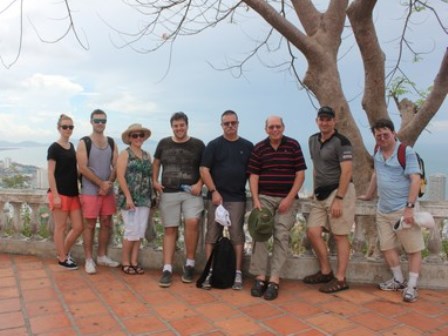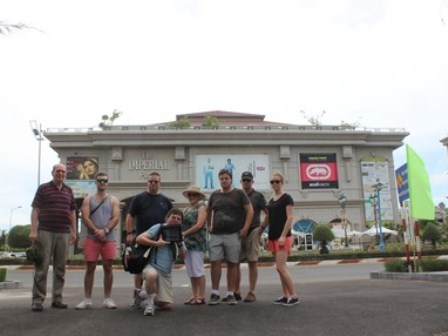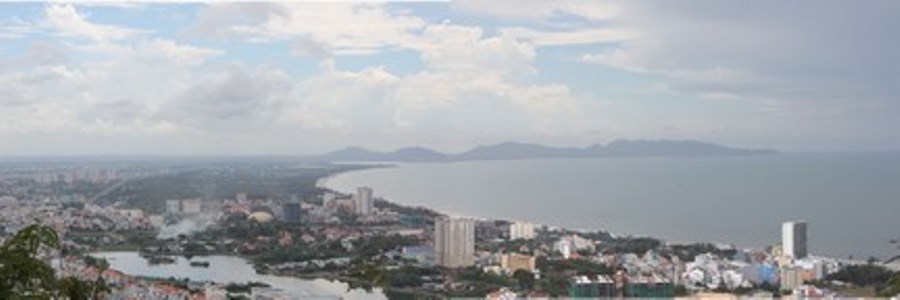An exploration of Vung Tau revealed its many roles in the lives of the Aussie troops, many of whom passed through on their way to the Task Force base, or returned later for a few days R&R in the bars (salubrious and otherwise) of this town that was once a holiday resort for French colonialists. The White Palace (the former French Governors Palace speaks to a more distant history while the statue of Jesus ¢ reached by a 700-step climb ¢ is the more obvious remnant of American presence. The airport that once served the Huey, Chinook and SkyCrane Allied choppers is now a helicopter base servicing the oil rigs.
Up on the lighthouse hill we got a great view of Vung Tau below us and you will see a brass coloured dome on the lower left of the panorama which is roughly where the Australian Logistical Support Groups (ALSG) was once based. The Imperial Hotel now occupies the site of the Peter Badcoe Club (archive picture) where Australian soldiers were billeted while on R&R.
In the bars, Russian oil workers have replaced Diggers but the girls seem to offer the same services their grandmothers once provided to the Australian and American troops. Vung Tau has grown tenfold in size since the 1970s when it offered blessed relief from the stresses of jungle patrols and camp life in general. But itÆs still a beautiful town with well-kept roads and streets and friendly smiles wherever you go.
We finished our tour at Tommy 3 bar where former Digger Glenn Nolan has created a little corner of Australia with everything from footy shirts to Anzac memorabilia. He also set us up to watch a couple of videos, while we ate lunch, to set us up for our impending trips to Nui Dat, the Horseshoe and Long Tan.
Thanks to our tour guest Brendan for these shots from the Lighthouse hill above Vung Tau and the hotel on the site of the former Peter Badcoe Club.


